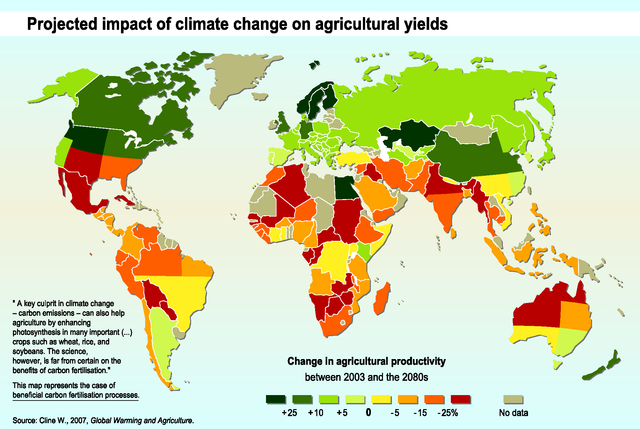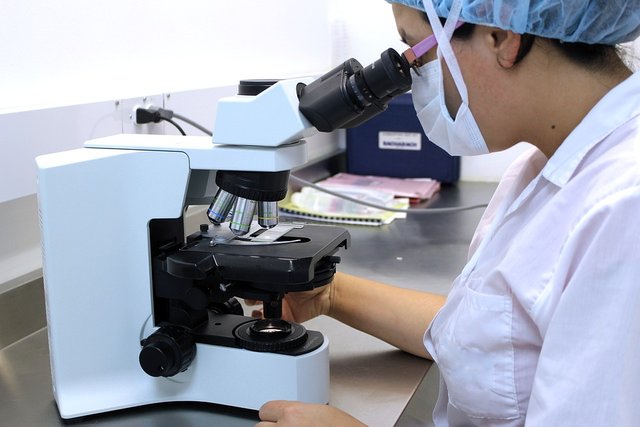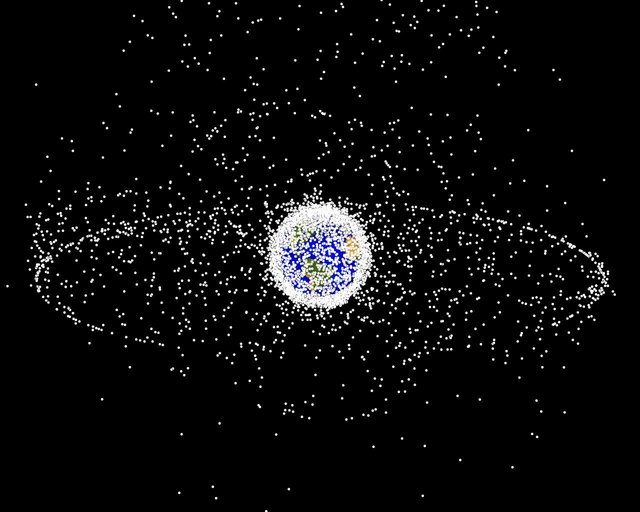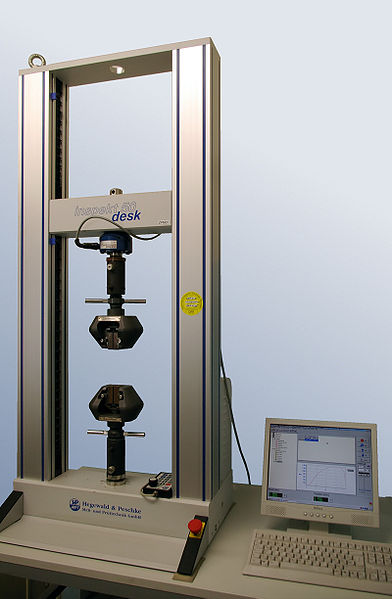Climate migrants of the future
The latest World Bank estimates indicate that if no actions is taken to prevent global warming in the near future, 140 million people could migrate to escape the prohibitive weather conditions. There will be internal migrations within the country of origin.

The countries that will be most affected are the developing countries, that less than others contribute to the emission of greenhouse gases into the atmosphere. Making predictions about such events is difficult, because no one can determine the exact evolution of climate and political scenarios. However, some models show that reducing the rate of greenhouse gas emissions into the atmosphere, the number of migrants involved could be significantly reduced. Using the models, the researchers have predicted "hot-spots", places that would be completely abandoned (for example, Ethiopia) in favor of others.
Central Bank experts believe that the countries involved should (with the help of the most advanced countries) diversify their economy and make it less sensitive to climate change. This could also lead to an improvement in living conditions.
A "new" organ
The interstitium called interstitium, was until recently, identified as a simple connective tissue, but thanks to new analyzes it has been classified as an organ.

Imagine CC0 Creative Commons - Source
This organ is widespread throughout the body, making it the largest of our body. The interstitium is a space containing a fluid (the interstitial fluid) and envelop and separates the organs, blood vessels, between them and from the skin.
Its composition makes it, probably, useful as a support and further protection of the different body districts. According to the researchers, whose study has been published on Scientific Reports, further investigations will be needed to study its role in various phenomena, including the spreading of certain tumors.
Article source
Space trash
In sixty years of space missions millions of debris have accumulated in orbit: they are pieces of satellites, rockets and space stations. They represent a serious risk for the safety of astronauts and other satellites.

Imagine CC0 Creative Commons - Source
In Earth’s orbit there are 23,000 objects larger than a tennis ball. 14,000 oh these are out of control. Estimates talks about millions of smaller fragments. At the speed at which they travel, they could easily pierce a space suit, or damage another satellites. Now aerospace engineers around the world are pushing for governments to finance systems development to remove these debris.
Post of the day

Imagine CC0 Creative Commons - Source
What is the difference between an agricultural engineer and a mechanical one? Does one's work exclude or exceed the work of the other? Or the result is a synergy? @sogless tries to answer these questions through his personal experience, showing us the importance of knowing the biological properties of different materials, even for an engineer.

Immagine CC0 Creative Commons, si ringrazia @mrazura per il logo ITASTEM.
CLICK HERE AND VOTE FOR DAVINCI.WITNESS
I migranti climatici del futuro
Le ultime stime della Banca Mondiale indicano che se non si adotteranno politiche atte a prevenire il riscaldamento globale, in futuro 140 milioni di persone potrebbero migrare per sfuggire alle condizioni climatiche proibitive. Saranno migrazioni interne allo stesso paese di provenienza.

I paesi più colpiti saranno soprattutto quelli in via di sviluppo, ovvero quelli che meno di tutti contribuiscono all’immissione in atmosfera di gas serra. Fare delle previsioni in merito a simili eventi è difficile, perché nessuno può determinare l’esatta evoluzione del clima e degli scenari politici. Tuttavia alcuni modelli mostrano che riducendo il tasso di immissione di gas serra in atmosfera, il numero di migranti coinvolti potrebbe ridursi sensibilmente. Sempre da modelli sono inoltre stati previsti degli “hot-spot”, ovvero dei luoghi che verrebbero completamente abbandonati (per esempio l’Etiopia) in favore di altri.
Gli esperti della Banca Centrale ritengono che i Paesi coinvolti dovrebbero (con l’aiuto dei Paesi più avanzati), diversificare la loro economia, e renderla meno sensibile ai mutamenti climatici. Questo potrebbe portare anche a un miglioramento delle condizioni di vita.
Un "nuovo" organo
L'interstizio chiamato interstitium, è stato fino poco tempo fa, identificato come un semplice tessuto connettivo, ma grazie a nuove analisi è stato classificato come organo.

Imagine CC0 Creative Commons - Source
Questo organo è diffuso in tutto il corpo, rendendolo il più grande del nostro corpo. L'interstizio è uno spazio contenente un fluido (il fluido interstiziale) e riveste e separa gli organi, vasi sanguigni, tra loro e dalla la pelle.
La sua composizione lo rende, probabilmente, utile come supporto e ulteriore protezione dei diversi distretti corporei. Secondo i ricercatori, il cui studio è stato pubblicato su Scientific Reports, serviranno ulteriori approfondimenti per studiare il suo ruolo in diversi fenomeni, tra i quali la diffusione di alcuni tumori.
Article source
Spazzatura spaziale
In sessant’anni di missioni spaziali si sono accumulati in orbita milioni di detriti: sono pezzi di satelliti, di razzi e di stazioni spaziali. Rappresentano un grave rischio per l’incolumità degli astronauti e per gli altri satelliti..

Imagine CC0 Creative Commons - Source
Sono 23000 gli oggetti più grandi di una pallina da tennis che ci orbitano sopra la testa. DI questi, 14000 sono fuori controllo. Le stime parlano di milioni di frammenti più piccoli. Alla velocità alla quale viaggiano sono tranquillamente in grado di perforare una tuta spaziale, o di distruggere un altro satellite. Ora gli ingegneri aerospaziali di tutto il mondo stanno spingendo perché i governi finanzino lo sviluppo di sistemi per rimuovere questi detriti.
Post del giorno

Imagine CC0 Creative Commons - Source
Qual è la differenza tra un ingengnere agricolo e un ingegnere meccanico? Il lavoro di uno esclude o supera il lavoro dell'altro? Oppure, come accade per la medicina, il risultato finale è opera di una sinergia? @sogless prova a rispondere a queste domande attraverso la sua esperienza personale, mostrandoci l'importanza, anche per un ingegnere, di conoscere le proprietà biologiche dei diversi materiali.

Immagine CC0 Creative Commons, si ringrazia @mrazura per il logo ITASTEM.
CLICK HERE AND VOTE FOR DAVINCI.WITNESS
Si ricorda che per motivi organizzativi è necessario utilizzare le tag “steemstem” e “davinci-times” per essere votati.
@aboutcoolscience - @farmacistasmz - @spaghettiscience - @rscalabrini
Sempre bravissimi e con post interessanti! Un gran lavoro quotidiano. Un saluto @giornalista
Downvoting a post can decrease pending rewards and make it less visible. Common reasons:
Submit
Complimenti per l'ottima qualità dei post selezionati ;)
Downvoting a post can decrease pending rewards and make it less visible. Common reasons:
Submit